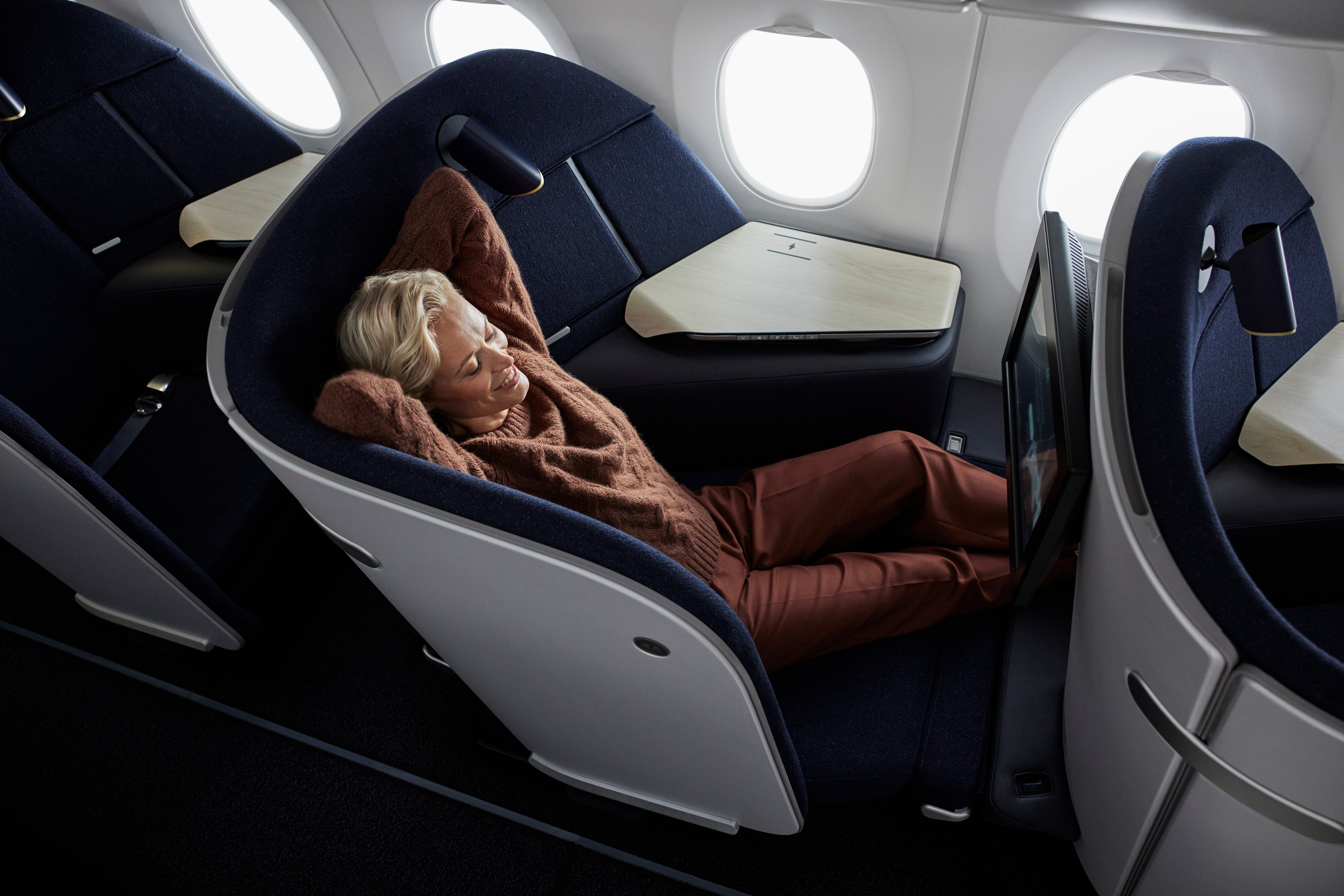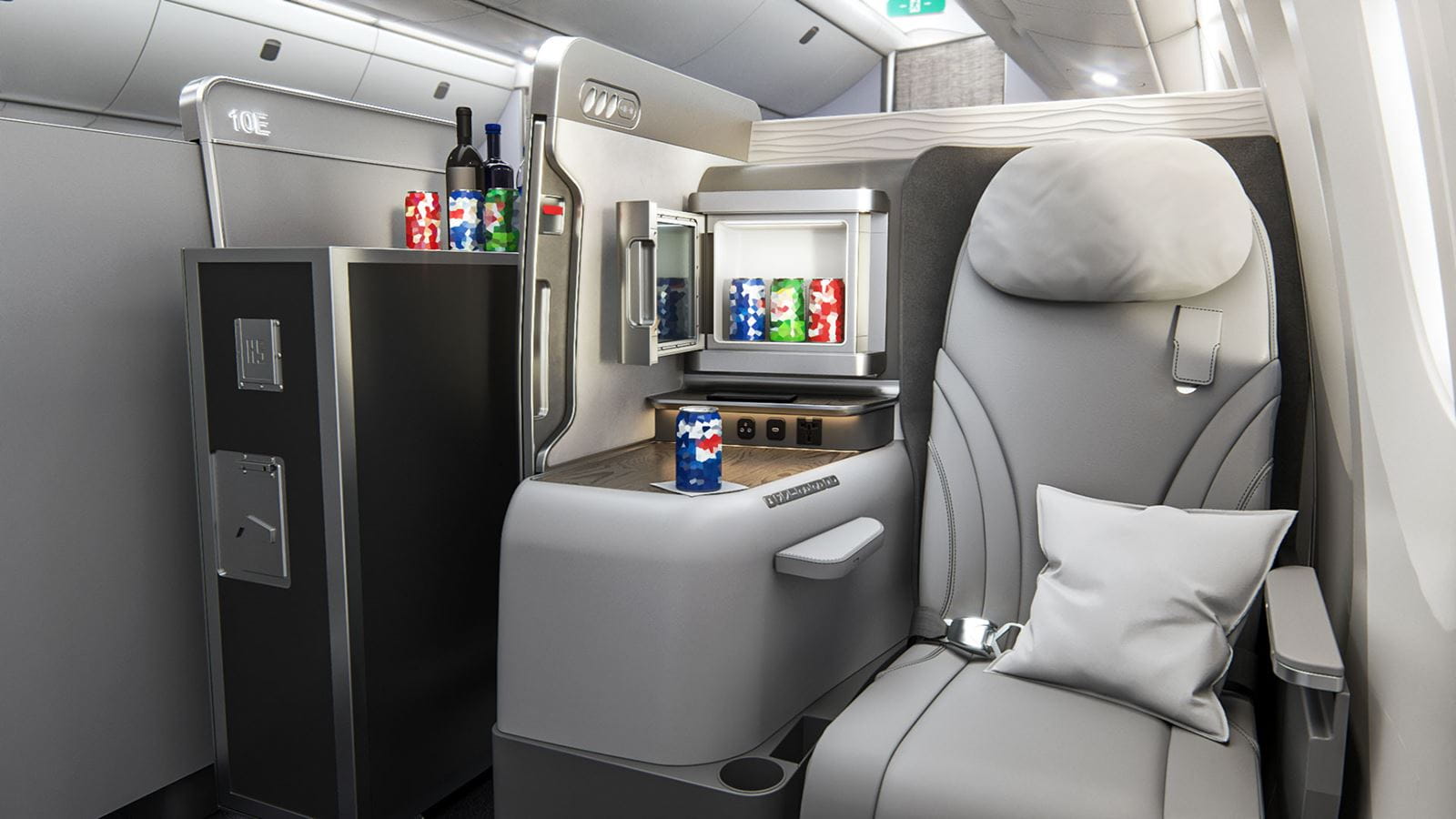
In The Independent’s travel trends column, Trendwatch, we dig into the types of trip, modes of transport and top buzzwords to watch out for.
Plane cabins are ever-changing, particularly in the long-haul world. In the past few months alone we’ve seen Air New Zealand unveil its first lie-flat beds for economy passengers – a series of bookable bunk-beds towards the back of the cabin known as the “Skynest”, which can be reserved for a mile-high nap during a chunk of the flight. Finnair has rethought the traditional business class seat with a new wide-backed “lounge” chair, which gives you more room to move around, yet still lie flat.
Meanwhile, Virgin Atlantic unveiled a new A330neo cabin, with its most luxurious Upper Class seat yet, the Retreat Suite. This enables business passengers seated at the front of the Upper cabin to turn their comfy, lie-flat seats into a snug, sociable booth for up to four passengers to dine or take a meeting together. Virgin is also prioritising bigger entertainment screens, wireless device-charging pads and Bluetooth functionality to keep pace with consumer trends.
But what other big moves are being made towards a smarter, safer or comfier cabin?
Here are some of the most recent innovations on their way to a plane near you:
Bluetooth-equipped entertainment
In some ways, it’s mad that this seemingly universal technology is just coming to inflight entertainment (IFE) systems. As David Kondo, head of customer experience product design for Finnair, points out: “The infrastructure for digital stuff onboard is just so lagged – you know, we’ve just figured out how to do Bluetooth headphones.” Virgin’s new A330-800neos will be equipped with seatback screens you can connect to your own earbuds, Qatar’s Dreamliners already have the functionality and United Airlines has it on some flights. Kondo predicts more of this “interacting with your own device”, such as being able to log into your own streaming services.
Techy passenger checks
The “internet of things” is coming to your plane seat. Namely, the seatbelts: “smart” belts were spotted at the 2022 Aircraft Interiors Expo, able to tip off the cabin crew as to who’s buckled up and who isn’t, saving the manual walk-through to check. TAP Portugal went even further in 2019, trialling a whole “smart seat” by tech manufacturer Recaro, which fed back passenger behaviour and data to the crew – they can see who is standing upright when they shouldn’t be, when a tray table is down or up, and who is belted up – all from a tablet at the front of the cabin. According to Recaro, “settings for the seat, lighting and temperature can [also] be individually controlled and saved from a smartphone or tablet”.

Seats that ‘know you’
Not just whether you’re stretching your legs when the seatbelt sign is on, but you – who you are, your preferences, even your calendar. “It might provide personalised inflight entertainment, tailor-recommend you things, what film to watch,” says Anthony Woodman, vice-president of customer journeys at Virgin. “Crews could be tipped off about birthdays, or if someone hits a million air miles with us, so they can organise a celebration in the moment.” If you’re delayed on a connecting flight, he adds, your seatback screen might alert you or allow you to book or change your next leg there and then.
The possibilities for this are endless, says Finnair’s Kondo. “You could get onto the aircraft and your seat knows what kind of recline positions you want to be in. It knows about your preferred light settings. It pre-orders you a G&T after take-off.” But many airlines are tangling with how to balance customisation with privacy (and just not seeming plain creepy). He envisages an opt-in system where you pre-set what you’re comfortable with.
Sugarcane cabin walls
One major area of innovation is lighter materials for cabin walls. Lighter aircraft mean less fuel burn, and some engineering companies are experimenting with building the cabin walls and bulkhead with resin derived from sugarcane, polyfurfuryl alcohol (PFA). This is not only lighter, but more sustainably made than the current material plane interiors are sculpted from (phenolic sandwich panels). Algae has also been considered as a base for creating flexible, lightweight aircraft panels, but developments to make either safe enough for commercial flights could take decades.
Under-floor heating
As someone who is perennially freezing on planes – you’ll find me under three airline blankets, a hoodie and a hot chocolate – I was delighted to hear that some airlines are considering under-floor panels to regulate cabin temperature. Kondo tells me that Finnair already has these on some aircraft, though only in the galley and crew areas; some cargo operators are also installing these for crew on larger, chillier cargo planes. However, Lufthansa Technik said at this year’s Aircraft Interiors Expo that it has signed a deal to provide its HeatNOW under-floor heating system to Condor on its A320 fleet.

Personal mini-fridges
Collins Aerospace won a Crystal Cabin award for its SpaceChiller design in June, which came first in the Passenger Comfort category. They say: “This new technology chills compartments to food-safe temperatures without the use of refrigerants that may impact global warming, reduces power consumption up to 50 per cent over alternate thermoelectric systems and can be leveraged across multiple service areas.” We say: “A stocked mini-fridge by your plane seat? Ace.”
Thinking tall
Another top avenue for cabin designers, says Kondo, is building into the aircraft’s vertical space – that is, the room above and below your seat. At present, he explains, “we’ve kind of maximised the footprint of what we can use in the cabin; we tend to design with a kind of floor plan view”. Wackier high-low designs have envisaged sleep pods in the traditional “overhead lockers” space, while one “nightmare vision” of staggered double-decker seating – the Chaise Longue Economy Seat Project – recently went viral, showing some higher and some lower seating stacked diagonally above one another. This too would necessitate the removal of overhead luggage space. Meanwhile, a patent filed by Airbus back in 2015 showed a similar configuration – essentially, the raised row’s backside right in front of your forehead.
Convertible and ‘floating’ seats
One of the key tasks when designing FinnAir’s AirLounge seat was giving the passenger more space to move around and get comfy, says Kondo. The wide shell and pull-up panel is aimed at letting you cosy up in the most natural position, more like a sofa than a dentist’s chair. Other designers are on this track, too: French studio Style & Design say that avoiding having the same body parts resting on the same place in a plane seat is key to long-haul comfort, sketching out a mattress-like foam seat with moveable headrest, leg rest, ottoman and arm rests so you can shape it around you like a giant memory-foam neck pillow. Not on the market yet, it was a finalist in 2019’s Crystal Cabin design awards. Meanwhile, American design studio Teague has created “floating” plane seats, Elevate, attached to the walls of a narrow-body aircraft; this does away with heavy under-seat mechanisms and allows entertainment screens to be attached to the cabin wall instead.
Trippy ceilings
Another slightly more offbeat train of thought is having projections or soothing images play out across the ceiling of a commercial flight. Collins Aerospace has revealed designs for a “Secant Luminous Panel” that can convert any panel of the plane interior into an illuminated display screen. Collins reps say this could be used for anything from branded advertising to personalised seat information. Other designs have shown airlines creating a relaxing atmosphere with a moving animated image of a starry night sky, blue sky with clouds or simply mood-enhancing colours and lights. It’s an idea that takes some airlines’ exisiting low-lit “mood lighting” or circadian rhythm lighting a step further. Boeing launched a patent for a similar projection-illuminated plane ceiling in 2016, with a spokesperson telling Quartz: “In theory, airlines could use lighting enhancements on the walls and bulkheads to display information about destinations or to project scenes that get passengers thinking about where they’re going.”







